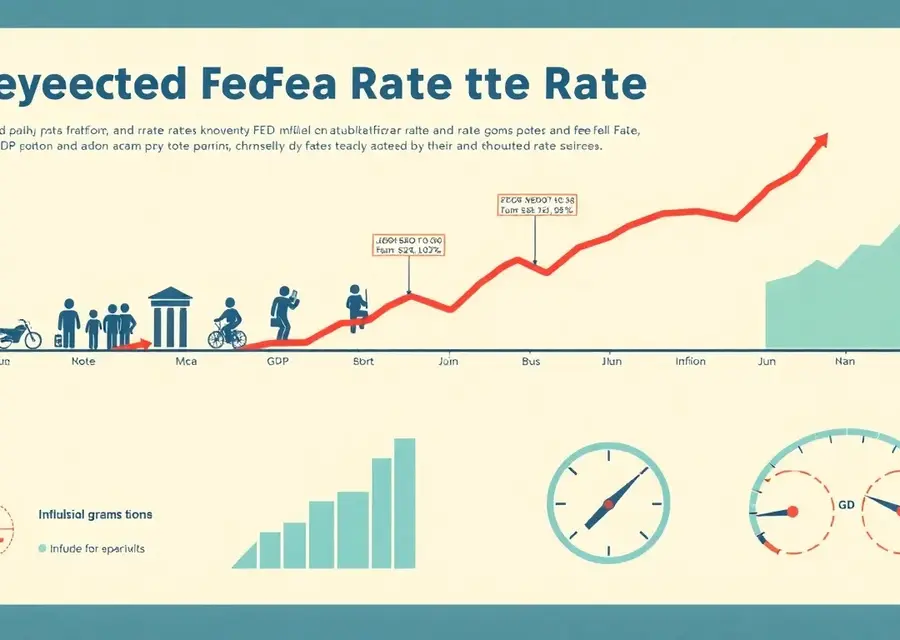Fed Rate Outlook: Interpreting Recession Signals and Policy Pathways
- THE MAG POST

- Sep 8
- 5 min read

Fed rate outlook reframes how households, businesses, and investors perceive risk as the economy absorbs mixed signals. The latest data on jobs, wages, and growth shapes whether policymakers lean toward caution or urgency. Understanding these dynamics helps readers distinguish headlines from the underlying forces driving policy and markets.
In this piece, we explore scenarios, compare historical precedents, and translate complex data into practical guidance for traders and policymakers. We also examine how shifts in the labor force, inflation pressures, and global spillovers interact with a changing policy landscape, offering a nuanced lens beyond daily headlines.
Assessing the Pulse: What the Latest Data Really Says
Today's data tapestry reveals a nuanced picture of labor markets, inflation, and output. Analysts seek signals not from single numbers but from the cadence of revisions, dispersion across sectors, and the pace of wage gains. The Fed rate outlook will depend on how these threads weave together in coming quarters.
Assessing the Pulse: What the Latest Data Really Says
Today's data tapestry reveals a nuanced picture of labor markets, inflation, and output. Analysts seek signals not from single numbers but from the cadence of revisions, dispersion across sectors, and the pace of wage gains. The Fed rate outlook will depend on how these threads weave together in coming quarters.
Labor Market Signals
Unemployment trends have shown resilience, with job openings staying robust in services while manufacturing softens. Participation rates have nudged higher as job seekers rejoin the labor force, amplifying wage pressure in some pockets. These dynamics influence policy by shaping employers' hiring costs and consumers' income expectations.
Hiring momentum matters more than a single payroll surprise because policy responses hinge on persistent conditions. When payroll growth decelerates gradually yet remains positive, the risk of a sharper downturn wanes, reinforcing a cautious but steady path for the Fed and for investors.
Wage Dynamics
Wage growth has cooled from peak levels but remains above target in several sectors. Real earnings growth has varied with energy prices and service demand, complicating inflation forecasts. The persistence or acceleration of wages will influence wage-price dynamics and, by extension, the policy bias.
With labor markets tight, even modest wage gains can perpetuate inflationary expectations. If wages hold firm alongside solid job creation, the Fed may favor gradual tightening or hold a higher neutral rate longer, rather than resorting to dramatic measures.
Growth and Productivity
Productivity trends have been uneven; while some sectors upgrade efficiency, others lag due to weaker capital investment. Growth momentum has cooled from earlier highs, with consumption softening and business investment lagging. Yet productivity improvements in technology-adopting firms offer pockets of resilience that can cushion growth without reigniting inflation.
A balanced view recognizes that trend GDP growth remains plausible if investment accelerates and supply chains normalize. In such a scenario, the Fed could remain on a calibrated path, avoiding abrupt policy shifts while markets adjust to a slower but steadier expansion.
Policy Pathways: What the Fed Might Do Next
The policy debate now centers on how much tightening or easing is warranted given the labor backdrop and inflation signals. The central bank's choices will be filtered through the lens of growth, market conditions, and the risk tolerances of policymakers.
25 vs 50 Basis Point Scenarios
With inflation cooling but core inflation stubborn in pockets, the baseline remains a measured, smaller adjustment. Markets price in a 25 basis-point move, yet incoming data could tilt the balance toward a larger step if labor resilience persists and wage growth accelerates.
A half-point adjustment represents a stronger commitment to cooling inflation or, conversely, signaling a readiness to loosen should growth slow unexpectedly. The ultimate call will reflect breadth of labor-market strength, financial conditions, and the trajectory of core prices over the next few quarters.
Policy Tools Beyond Rates
Beyond rate changes, the Fed's toolkit includes balance-sheet operations, forward guidance, and liquidity facilities designed to smooth transmission. The timing and clarity of these tools matter as much as the rate path in shaping expectations and market behavior.
The effectiveness of non-rate tools depends on confidence, transmission channels, and external shocks; thus the Fed's communication becomes as important as its policy action. Clarity around the policy horizon helps households and firms plan accordingly, reducing unnecessary volatility.
Market Reactions: How Investors Should Read the Tea Leaves
Markets will parse the policy signal alongside growth and inflation surprises, balancing risk and opportunity across asset classes. The policy path can reprice equities, bonds, and currencies in ways that require disciplined, scenario-aware thinking.
Equities, Bonds, and Yields
Equities respond to revised growth expectations; when policy remains on hold or eases, equities may rally on improved earnings multiples. When the path tightens, yields adjust to reflect tighter financial conditions, and stock sectors with durable pricing power tend to outperform.
Bonds price in the rate path; a flatter curve may reflect expectations of slower growth, while a steeper curve could signal rising long-term yields as investors demand more return for risk in a higher-for-longer regime. Diversified exposure helps manage that transition.
Risk Management in Uncertain Times
Diversification and hedging become essential in a landscape where data surprises can shift rapidly. Scenario analysis, position sizing, and robust liquidity help preserve capital during drawdowns and capture opportunities when conditions improve.
Practical steps include maintaining liquidity buffers, calibrating risk budgets, and monitoring leading indicators such as wage growth, energy prices, and consumer sentiment. A disciplined framework helps translate macro signals into actionable investment decisions.
International Spillovers: Global Growth and U.S. Policy
Policy shifts in the United States reverberate through trade partners, currency markets, and inflation dynamics abroad. Understanding these channels helps assess how global growth and U.S. policy interact in a connected economy.
Trade, Inflation, and Currencies
Trade dynamics affect price formation and domestic inflation via import costs and supply chains. When the Fed tightens, a stronger dollar can dampen export competitiveness, influencing manufacturing and commodity prices worldwide.
Meanwhile, inflation differentials across regions shape capital flows and exchange-rate expectations. Investors watch currency movements as a barometer for policy credibility and global demand conditions.
Emerging Markets and Capital Flows
Emerging markets respond to shifts in U.S. rates through funding costs and capital flows. A tightening regime can attract risk-off capital to safer assets, while a more accommodative stance may unleash a repositioning toward growth-oriented assets in developing economies.
Domestic pressures in EMs—inflation, growth rates, and political risk—play into the global policy mix. Prudent exposure and thorough risk analysis help navigate these crosscurrents in a volatile environment.
Key Takeaways
Condensed Insights
The current landscape suggests a patient but watching Fed, where labor-market resilience and inflation momentum shape the policy path more than any single report.
Investors should prepare for a data-driven path, balancing the possibility of gradual tightening with scenarios that call for more caution if growth slows or wage pressures ease unexpectedly.
Practical Implications
Practically, households and firms should plan around a data-anchored forecast, maintaining liquidity and focusing on durable income streams and essential purchases while monitoring policy guidance.
Instruments across equities, bonds, and currencies will continue to reprice as new information arrives; disciplined risk management remains the core skill in navigating this evolving cycle.
Topic | Summary |
Post Title | Fed rate outlook and data-driven policy insight |
Key Theme | How labor data and inflation shape Fed policy and markets |
Investor Angle | Strategic guidance for equities and bonds in changing policy |






















































Comments